
table of contents
- Bushes with thorns
- Trees without thorns
If you want to create a natural garden, you should also make it as pleasant as possible for the local animals. So that the birds that stayed in the garden in autumn and winter can find enough food, it is advisable to cultivate native bushes with autumn and winter berries as fodder plants. These are suitable as a hedge but also as a solitary.
Bushes with thorns
Native shrubs that have thorns in addition to autumn berries are not only good forage plants for native birds, but also offer safe nesting protection. The woody plants are also suitable as solitaires, but above all as a hedge. Here they offer enough space for several bird families to breed. In addition, the flowers are approached by many insects in spring and summer, which can also serve as good food for the birds.
Barberry (Berberis vulgaris)
- common sea buckthorn
- also vinegar berry
- evergreen
- well suited as a hedge plant
- small, yellow flowers
- egg-shaped, red or purple to black berries
- until deep winter on the bush
- bear thorns
- hardy

Tip: The berries of the barberry are not only edible for birds, we humans can also enjoy the berries of the buckthorn usually processed into juice or jelly. Often the berries are also offered dried at markets.
Common juniper (Juniperus communis)
- Conifer
- no thorns, nevertheless pointed
- up to eight meters high
- Flowers in cones from April to June
- black fruits are fleshy cones
- do not ripen until the second or third year
- serve as food for birds
- non-toxic
- can live up to 600 years
- evergreen needles
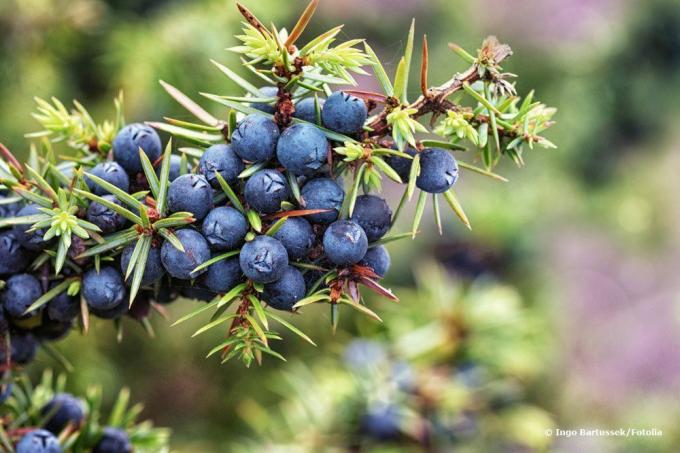
Tip: Juniper berries are known to be dried in the kitchen. The fruits of the juniper are also used to make gin.
Buckthorn (Rhamnus cathartica)
- Large shrub
- up to eight meters high and six meters wide
- has thorns
- yellow-green flowers
- Flowering time from May to June
- black fruits in autumn
- Fruits are poisonous
- hardy
- Fall foliage color
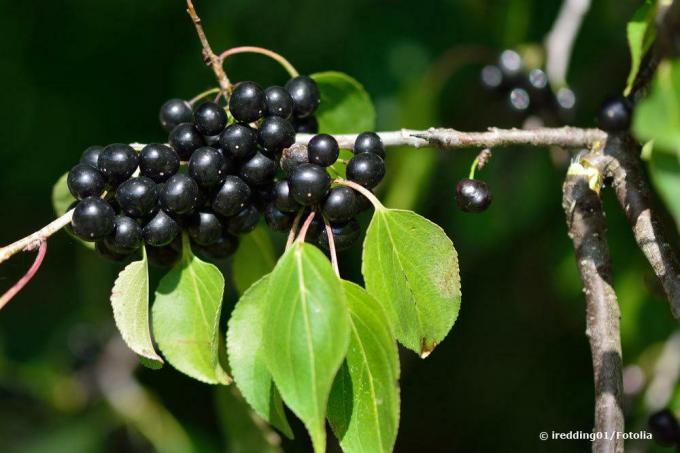
Note: The thorns sit at the tips of the short shoots and form a cross with the branches, from which the plant gets its name. But this also offers the native birds good protection when nesting.
Holly (Ilex)
- also called winter berry
- prickly leaves
- evergreen
- growing up to 25 meters
- can be cut into a ball
- good for breeding birds
- red berries in winter
- are absolutely frost hardy
- good forage plants in winter
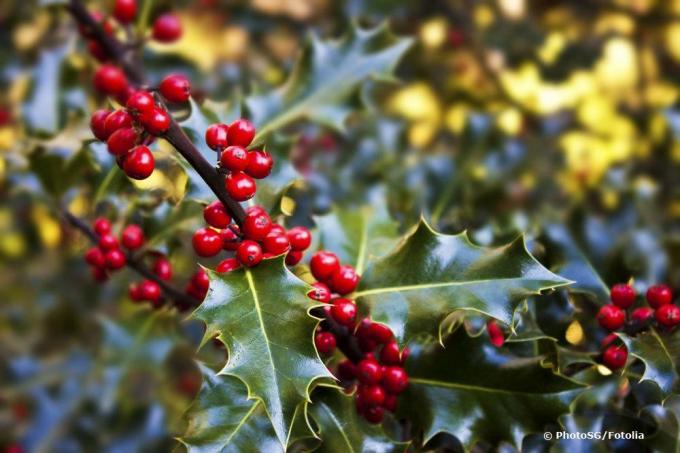
Tip: You are certainly familiar with the holly branches with the red berries from the decorative items at Christmas time. This custom of Christmas decorations originated in England and America, where it has a long tradition.
Hawthorn (Crateagus monogyna)
- as a tree or a shrub
- up to seven meters high
- valuable nectar dispenser
- also popular as a medicinal plant
- has spines
- white flowers from May to June
- smell unpleasant
- September brick-red berries
- can be enjoyed cooked
- Autumn colors

Tip: If you plant the trees as a hedge and privacy screen, the birds can not only find their food here mainly in autumn and winter, but also breed directly in spring.
Trees without thorns
However, there are also some bushes that can serve as fodder plants because they also bear fruit that birds like to eat, but do not have thorns. Here, too, the birds can create their nests, but due to the lack of thorns, they are less protected, for example from outdoor cats, which can more easily get to the nests here. Nevertheless, these are good forage plants.
Cherry laurel (Prunus laurocerasus)
- also known as laurel cherry
- no laurelbut related to cherry and plum
- as a solitary or hedge
- Growth height up to four meters
- white flowers from May to June
- black fruits from July / August
- evergreen
- hardy
- poisonous in kernels, seeds and leaves
- The pulp itself is not toxic or is only moderately toxic

Note: The cherry laurel is not as poisonous as it is often described. The fruits, which small children especially like to put in their mouths, are not as poisonous as the seeds or leaves. The poison control center also points out that if no more than three fruits are consumed, no symptoms of poisoning occur. However, you should be careful about cultivation when there are young children in the household.
Cornelian cherry (Cornus mas)
- Shrub or tree
- not related to the cherries
- up to eight meters high and wide
- Multi-stemmed bushes
- yellow flowers
- Flowering period March to April
- pleasantly lightly scented
- red, edible stone fruit
- Ready for harvest from August to October
- Fall foliage color

Tip: Due to its early flowering, which often starts as early as February, the Cornelian cherry is not only one of the suitable forage plants for the domestic birds, it is also an eye-catcher in the otherwise dreary Winter garden.
liguster (Ligustrum vulgare)
- always cultivated as a shrub
- up to four meters high
- strongly scented white flowers
- Flowering from June to July
- black berries in August and September
- slightly poisonous
- evergreen
- Leaf shedding in spring
- purple autumn color
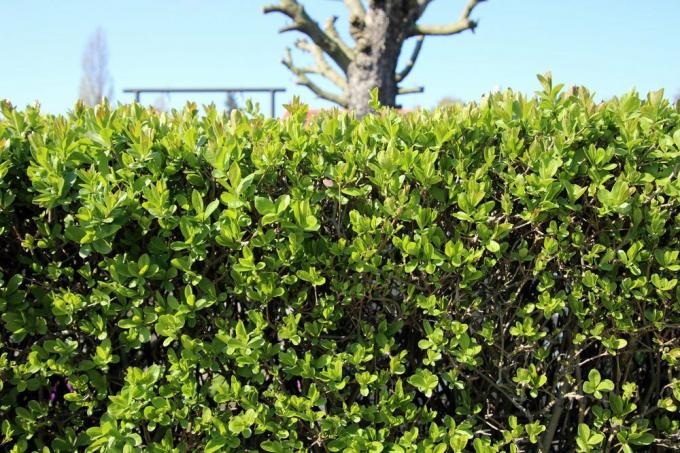
Tip: The domestic privet is one of the best woods for birds. Because it is easy to care for and offers birds as well as insects of all kinds cultivated as a hedge a lot of protection and food. It is also a colorful eye-catcher in dreary gardens in autumn and winter.
Euonymus europaeus
- also known as spindle bush
- Large shrub
- grows up to six meters high
- Width up to four meters
- grows with multiple stems
- Flowering from May to June
- in umbels
- red fruits from July and August
- bright carmine-red foliage in autumn
- poisonous in all parts
- well suited as a solitaire in a corner

Note: For us humans, the fruits of the ephemera are highly poisonous and should therefore not be consumed under any circumstances. Caution should also be exercised with small children and pets in the household. Birds, on the other hand, like to feed on the fruits. First and foremost, titmice and robin must be mentioned here.
Blackthorn (Prunus spinosa)
- also known as sloe
- Fruits absolutely frost hardy
- up to five meters high
- Width even up to six meters
- white flowers from March to April
- slightly fragrant
- Fruits blue, purple or black
- Fall foliage color
- hardy
- absolutely non-toxic
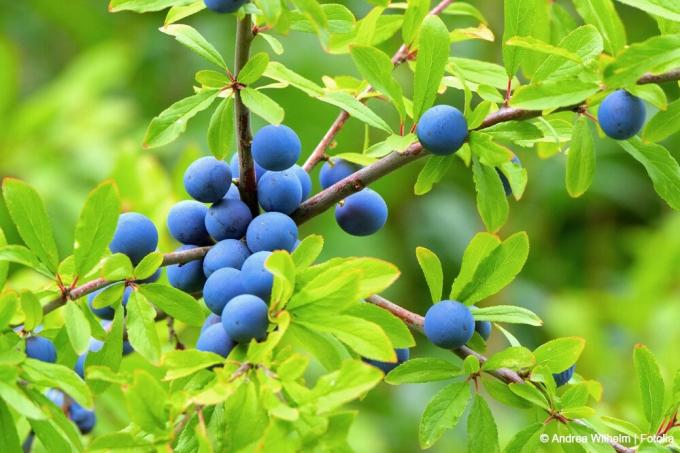
Tip: The fruits of the sloe, which are also edible for us humans, should only be harvested after the first frost, then they get their very special aroma.
Black elder (Sambucus nigra)
- can be cultivated as trees or bushes
- up to seven meters high
- up to five meters wide
- white umbels
- from May to July
- slightly pleasantly scented
- black and purple drupes
- from August to autumn
- absolutely non-toxic in all parts
- hardy
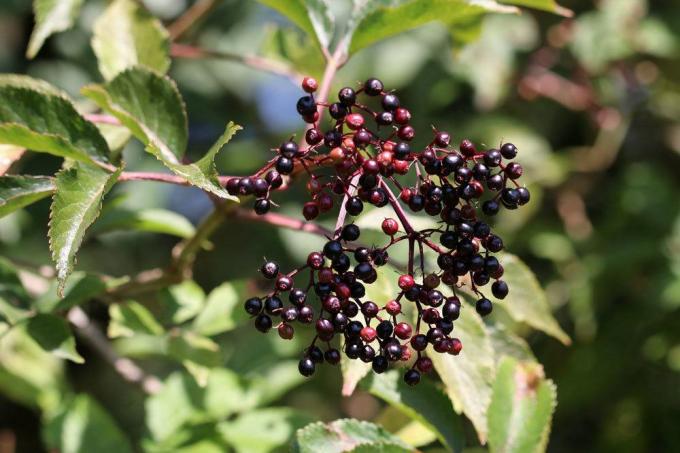
Tip: The fruits of the black elder are not only suitable for domestic birds as autumn and winter food. Elderberries are also considered very healthy for us humans and are often made into jelly or juice. The elderflower can also be used in the kitchen. Therefore, the bushes can also be found in many cottage gardens.
Rowanberry (Sorbus aucuparia)
- also known as mountain ash
- bright red-orange berries in autumn
- next to colorful autumn leaves
- usable depending on the variety
- up to twelve meters high, depending on the location
- up to six meters wide
- white flowers in May and June
- non-toxic in all parts
- hardy
- undemanding and easy to care for
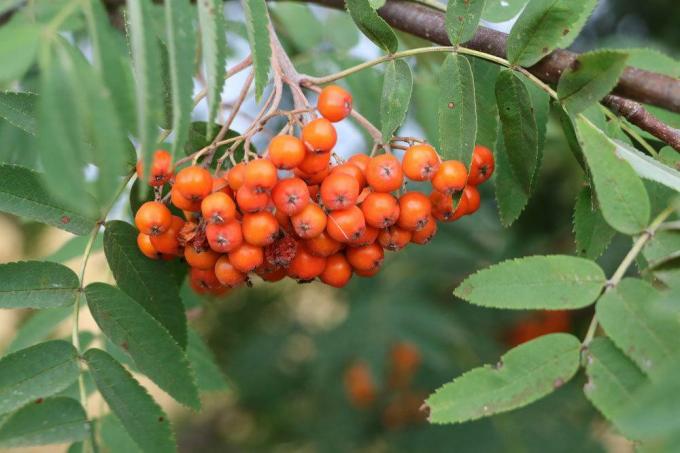
Note: You may also remember the warning your parents or grandparents warned not to pick rowanberries, as they are poisonous. However, this is not true, because the berries of the mountain ash are not poisonous and can be eaten raw directly from the sweet varieties. All others are inedible due to the taste.



